Home Lighting Guide 101
Create comfortable and welcoming spaces with this useful guide to lighting for your home.
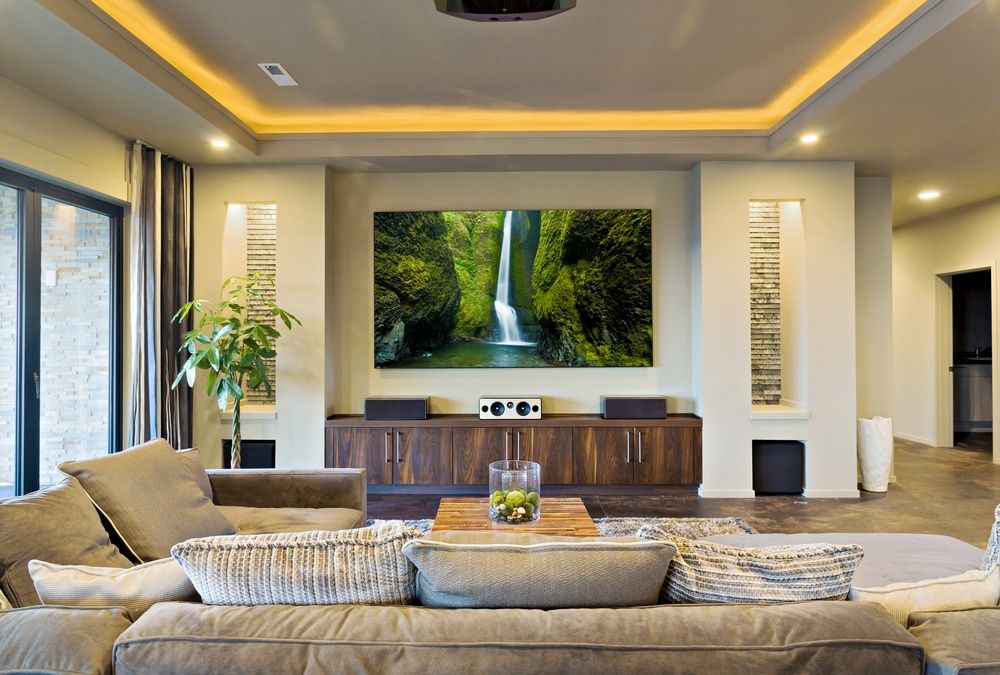
Lighting can transform your space from dark and dull to cozy and warm. There is more to lighting than ceiling lights - you can use many light fixtures to create the right mood and atmosphere. Before you go ahead and choose your light fixtures, you need to understand how lighting works and how to properly set it up in your home.
In this post, we look at creating the perfect atmosphere for all occasions with the right light fixtures, shapes, sizes, and styles. This handy lighting guide looks closer at home lighting options and provides essential tips on selecting and using the right lamps and fixtures.
Different light sources
Lighting can make or break your room's ambiance. By understanding how natural and artificial light sources work together in your home, you can easily transform any living space into an aesthetically pleasing environment.
Natural light
Natural lighting is one of the most important elements in any home, and its warm, inviting quality can improve both the look and feel of any space. Natural light provides many benefits, such as reducing energy costs, improving air quality, promoting good health and productivity, as well as creating an inviting atmosphere.
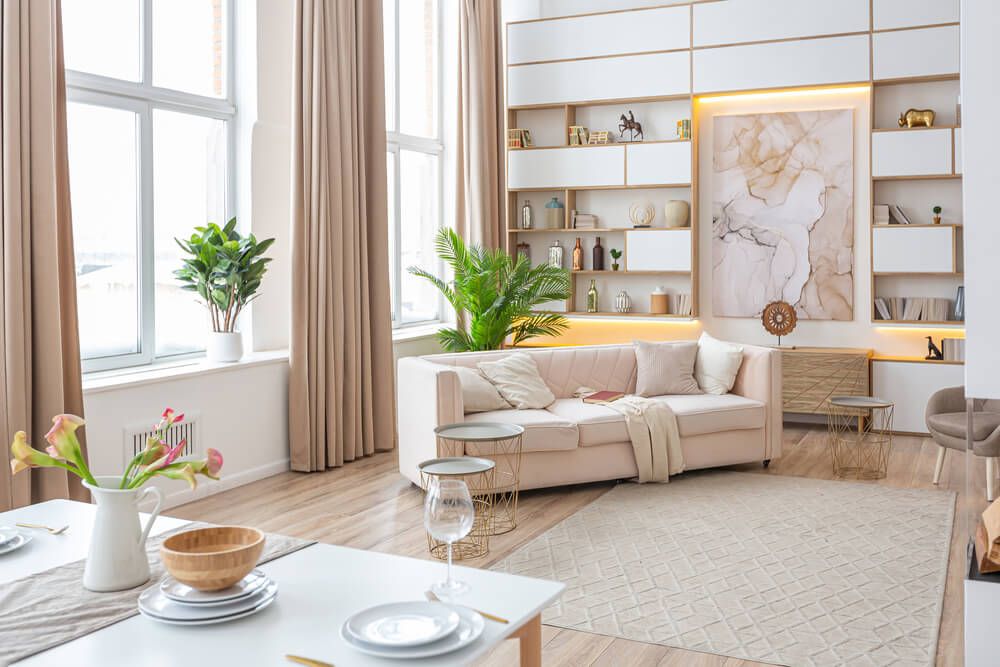
Natural light also allows for more flexibility in design by allowing for different styles, colors, patterns, and shapes throughout a space without relying on artificial lighting sources.

With the right placement of windows and furniture, natural light can be used to brighten up darker rooms or create a cozy atmosphere in an otherwise dull room. Natural lighting can easily be controlled using blinds or curtains if needed for privacy or light control.
Artificial light
Artificial lighting is a great way to create a variety of moods and atmospheres throughout a space. Though it doesn't provide the same natural feel as sunlight, artificial lighting still serves as an important element in home design.
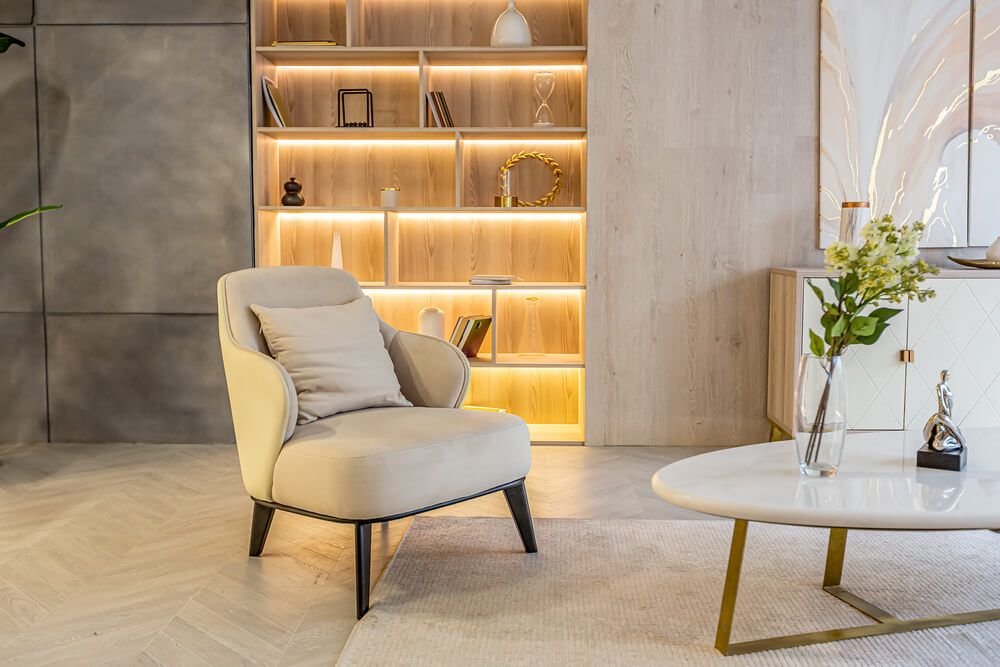
Artificial light comes from lamps, fixtures, and bulbs and can be used to accentuate certain objects or areas in a space. Different shapes, sizes, styles, and intensities of artificial light allow for many different looks within a space, depending on the desired atmosphere.
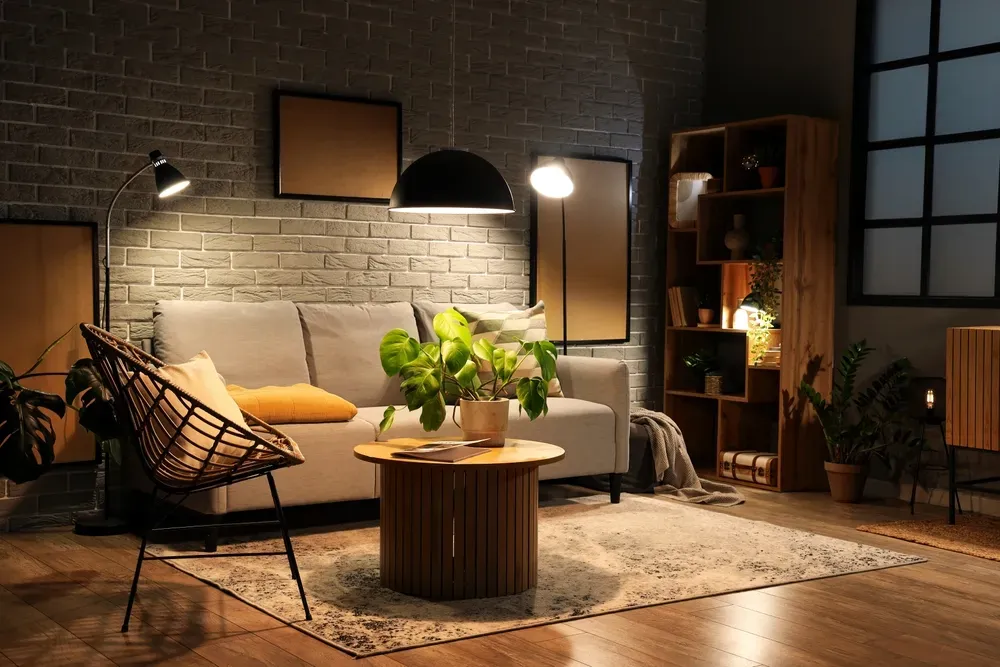
With the right kind of lighting, you can make any living space comforting and inviting. Artificial lighting also allows for more control over brightness levels to reduce eye strain when necessary or make certain tasks easier, such as reading or writing.
Types of home lighting
- Ambient lighting: The primary source of light that offers overall brightness. Ceiling fixtures, chandeliers, and recessed lights are typical examples.
- Task lighting: Focused lighting for specific activities such as reading, cooking, or working. Desk lamps, under-cabinet kitchen lights, and vanity lights serve this purpose.
- Accent lighting: Used to highlight features like artwork, architectural details, or plants. Wall sconces, spotlights, and LED strips are common accent options.
Different types of light fixtures
Now, let’s look closer at the different types of light fixtures you can use to illuminate your space.
Table lamps
Table lamps are an excellent tool for creating specialized areas in a home. You can use them to create the perfect space for unwinding with a book or relaxing while watching a movie. Lighting can help you decompress after school or work while you get cozy under a blanket.
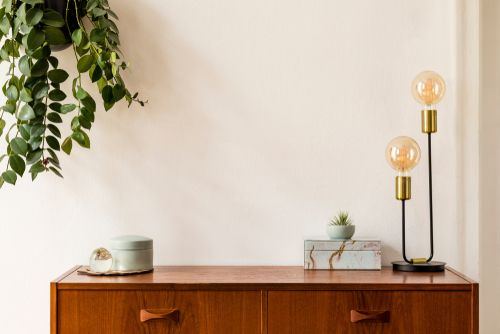

Use table lamps in all rooms
In contrast, these types of lamps would not be the best option for a study or home office. Task lighting, such as table and work lamps, is far more suitable in a home office or study room. Use brighter light here to help complete tasks while keeping the mood focused.
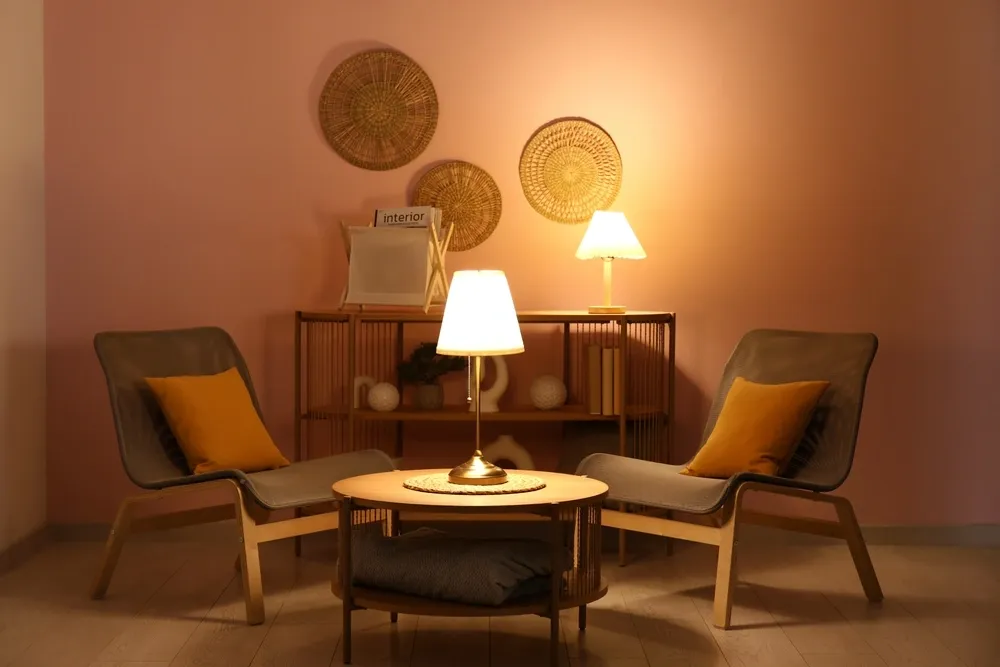
Fortunately, table lamps come in a variety of shapes, sizes, colors and styles - from small bedside lamps to larger side table lamps - so there's likely to be something that suits your taste.
Floor lamps
Floor lamps are an excellent tool for interior design, offering both versatility and practicality that can make a big impact on any room. They are often one of the first fixtures chosen because of their ability to maximize vertical space.
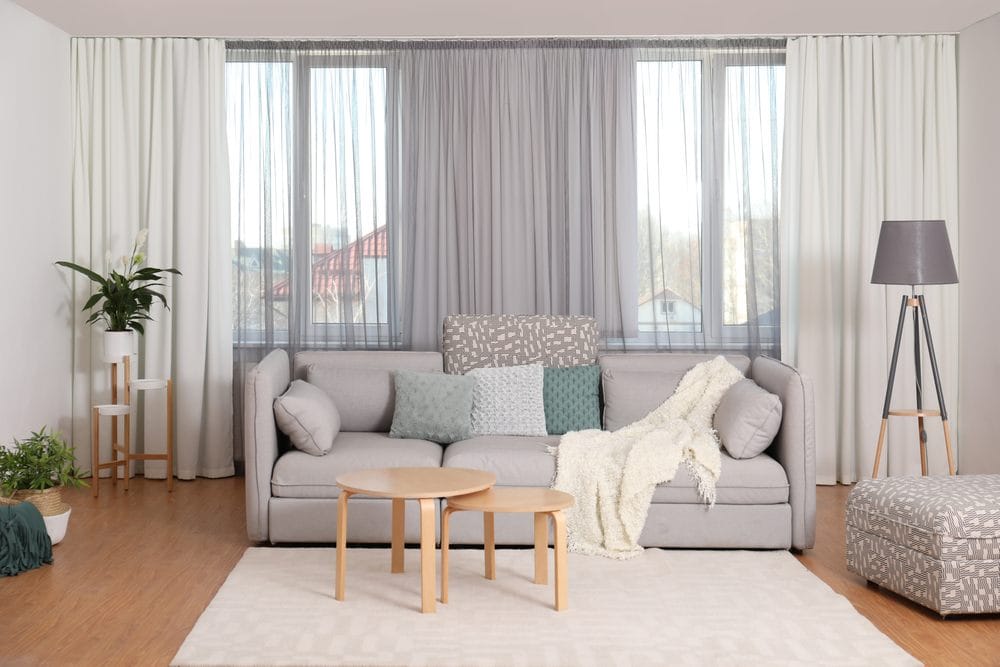
Tall lamps can minimize floor space and create a sense of openness. It's one of the oldest tricks interior designers use to make a room look bigger. Lamps are incredibly versatile and can be used individually or with other light sources to achieve different effects.
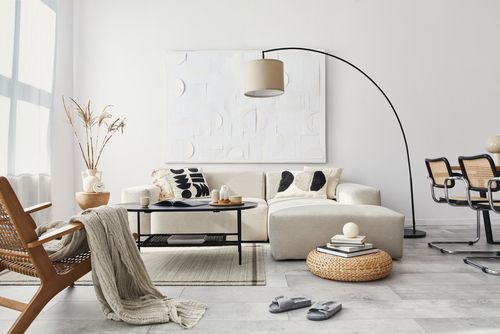
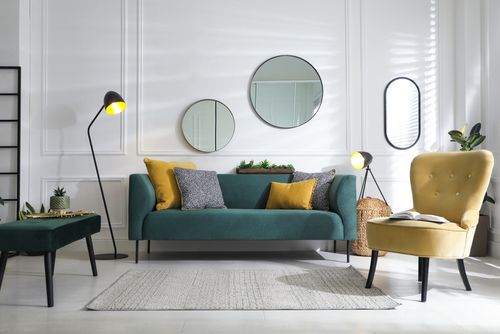
Make a statement with a floor lamp
Because of their portability, floor lamps can be used in multiple rooms for different purposes. For example, a beautiful floor lamp emitting ambient light would be a perfect addition to a reading nook. You could also use it to highlight an architectural feature you love.
Ceiling light fixtures
Designers agree that one light source in a room is not enough. You can mix up the lighting by making the most of your ceiling lights. Ceiling lights are a great way to add ambient lighting and brighten a room.
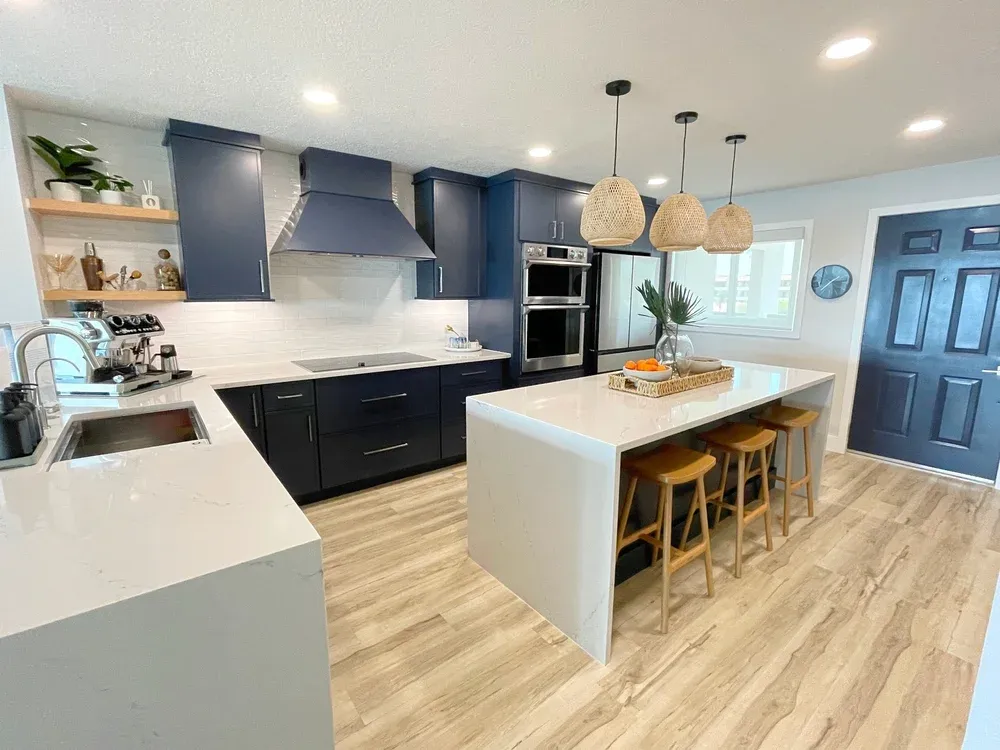
They are most commonly placed over a seating area or in the center of the room, usually over a couch or dining table. They range from flush-mounted light fixtures to more elaborate chandeliers in various styles that complement any room's decor and design.
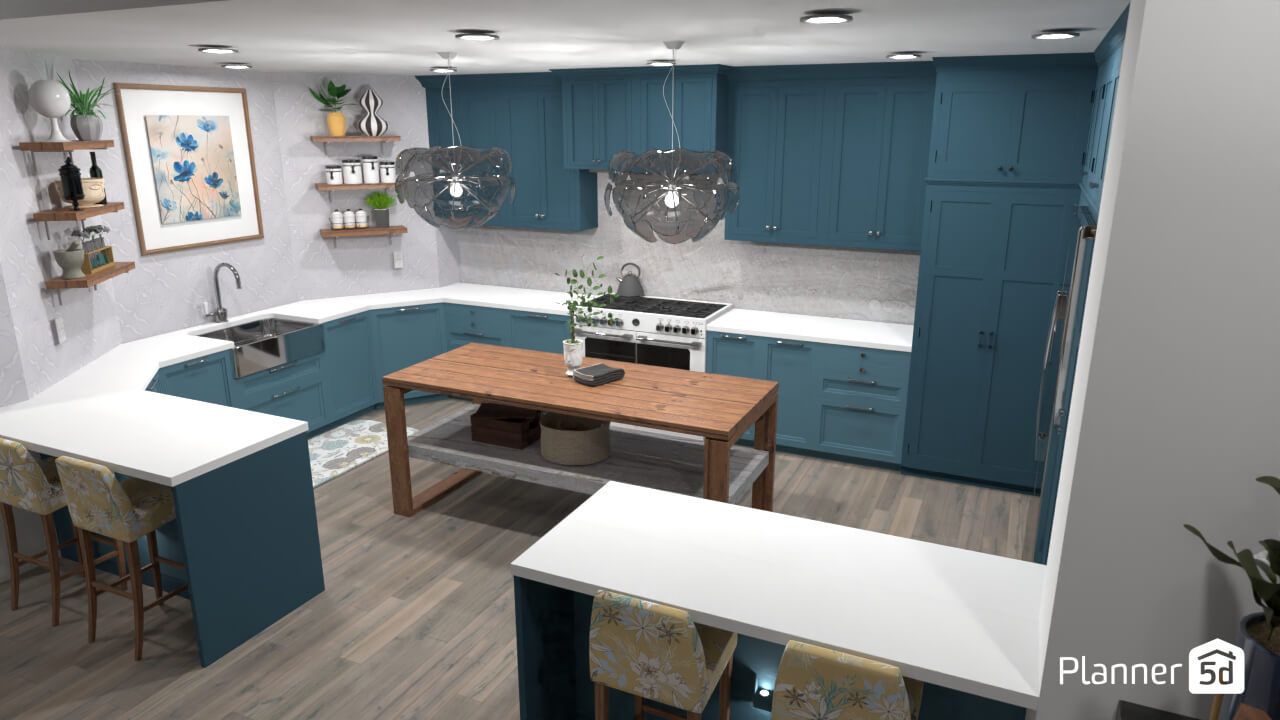
LED recessed lighting is also popular, allowing for softer illumination that won't take up too much space. Pot lights or pendants can also be used as accent lights to direct attention away from general lighting areas and toward specific furniture pieces or artwork on the walls.
Wall fixtures and sconces
Sconces are another great way to brighten dark corners while adding charm and character. All these types of lights can be combined to achieve the desired effect in any given room. They can also be great space savers as they don’t require any floor space.
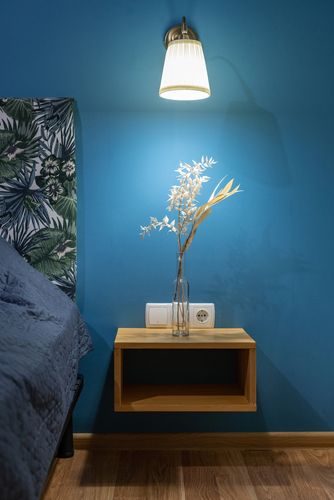
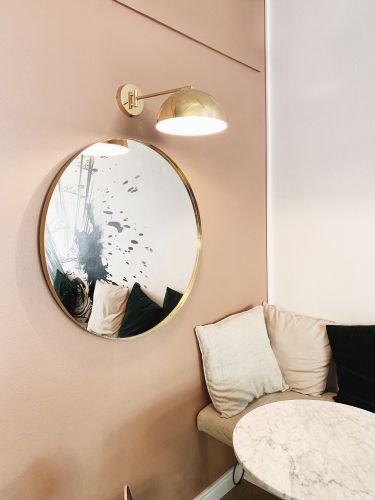
Sconces are space savers but can't be moved easily.
Sconces are a lot like table lamps but can be installed without a counter, table, or desk space. One downside, however, is that once they are installed, you can’t really move them around or from one wall to the other, like you can with a lamp.
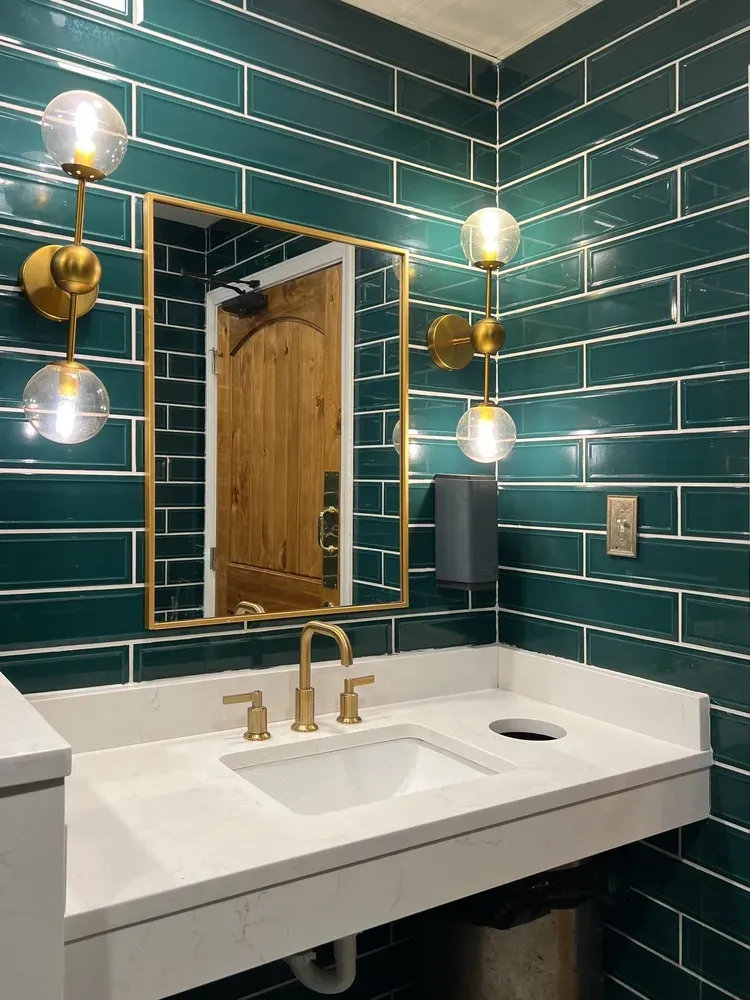
Sconces come in all shapes and sizes and offer styles ranging from modern and minimalist to traditional and rustic. Depending on what you want to achieve, they can be a great asset. You can also use sconces instead of lamps on your side table to save space or highlight artwork.
Key lighting design principles
- Layering: Use a combination of ambient, task, and accent lighting in each room for flexibility and depth.
- Color temperature: Use cooler (bluish) light for work areas (kitchen, bathroom) and warmer (yellowish) light for relaxation spaces (living room, bedroom).
- Lumens & Lux: Adjust brightness to room function. For example:
- Living area: ~200 lux
- Kitchen: ~350 lux
- Bedroom: 100–150 lux
- Bathroom mirror: up to 400 lux.
- Controls: Install dimmer switches and smart lighting controls to tailor light levels to activities and time of day.
- Energy efficiency: Opt for LED bulbs, which offer long life, low energy use, and a range of color temperatures.
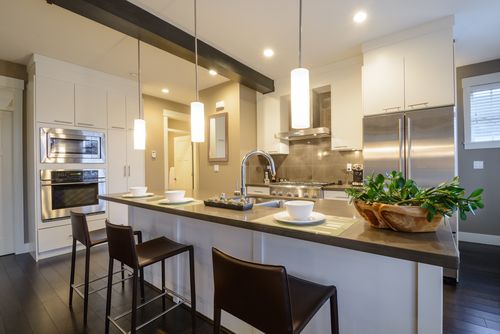

Modern lighting takes inspiration from the old.
Home lighting options for different rooms
Now let’s look at the different lighting options for different areas of your home.
Entryway lighting
Your entry is one of the most important areas to consider, as it gives visitors the first impression of your home. No one wants to be welcomed into a dark and cold foyer, so you should install proper lighting to create a warm and welcoming effect. Wall sconces also work perfectly in this area.
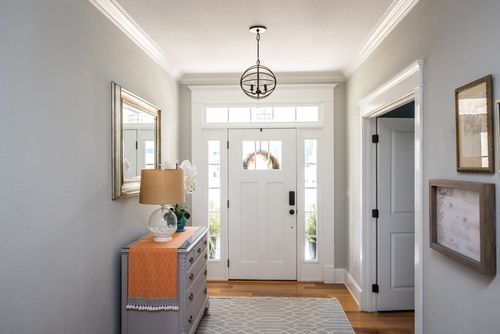
Dining room lighting
Your dining room or area also needs proper lighting to create a welcoming atmosphere and provide enough light for people to see what they are eating. Placing a pendant light overhead will brighten up the table, while additional lights (including dimmers) can create a pleasant ambiance in the room. Perfect for entertaining guests.
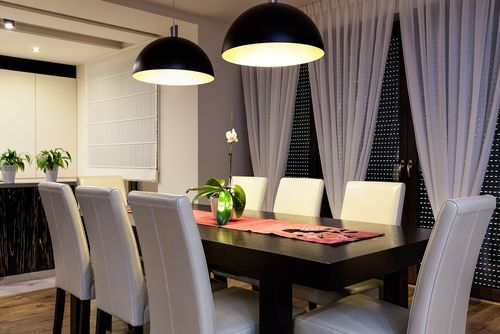
Bathroom lighting
Most of us start and end our day in the bathroom. It should be a relaxing space that is clean and welcoming. Your bathroom is where you can unwind and have time to yourself before you get on with life. With bathrooms, it's important to have good lighting. Bright lights work best, and installing pot lights in the ceiling is one way to keep the room illuminated, clean-looking, and sleek.

Practical tips
- Use mirrors and light-colored surfaces to reflect and amplify natural and artificial light.
- Place switches conveniently, especially near entrances and exits.
- Regularly clean fixtures and replace bulbs for optimal performance.
- Consider motion sensors or timers for hallways and outdoor lighting to save energy.
Common mistakes to avoid
- Relying solely on overhead lighting can create harsh shadows.
- Ignoring the importance of task or accent lighting.
- Using the wrong color temperature for a room’s function.
- Overlooking the value of dimmers and flexible controls.
Conclusion
Proper lighting can transform your room by creating depth and character, depending on how you use it. It can make a small space seem bigger and add warmth to dark and uninviting spaces. No wonder it’s such a big part of interior design.
Want to learn more about interior design basics? Sign up for our Online Course that's perfect for beginners and those looking to update their skills.
When considering lighting for your home, make sure to select lights that complement the style of the room and are functional. Where you place them will help you create the desired ambiance and tie the room together.
Planner 5D: The Future of Interior Design
Experience the power of AI-driven design with Planner 5D. Our innovative tools, including the Design Generator, Smart Wizard, and AI floor plan recognition, make bringing your dream home to life easier than ever. Transform your vision into reality and unlock a world of design possibilities today.
Start designing your dream homeFAQ
What are the best types of lighting for a small living room?
Use wall sconces and floor lamps instead of bulky table lamps for small living rooms to save space. Add a semi-flush ceiling light that spreads upward to make the ceiling feel higher. Mixing these options will make your room feel bigger and more open.
How can I create a cozy atmosphere in my bedroom with lighting?
Place warm-toned lamps on both nightstands and add string lights or LED strips behind your headboard for a soft glow. Use dimmer switches on all bedroom lights so you can adjust brightness based on your mood. Avoid harsh overhead lights when you want to relax.
What are the key differences between task lighting and accent lighting?
Task lighting is bright, focused light that helps you see clearly while doing things like reading, cooking, or crafts. Accent lighting is softer and draws attention to specific areas or objects like artwork, plants, or architectural features. You need both types in most rooms for the best lighting setup.
How do I choose the right bulb color for different rooms?
Pick warm white bulbs (2700-3000K) for bedrooms and living areas where you want to relax. Use cool white bulbs (3500-4100K) in kitchens, bathrooms, and work areas where you need to see clearly. The right bulb color can change how the whole room feels and how well you can do different activities.
What are some creative ways to use lighting in a kitchen?
Install under-cabinet lights to brighten countertops and make food prep easier. Add pendant lights above islands or dining areas to create a focal point and bring light closer to where you eat. Strip lights inside glass cabinets can showcase your dishes and add a warm glow to the room.
